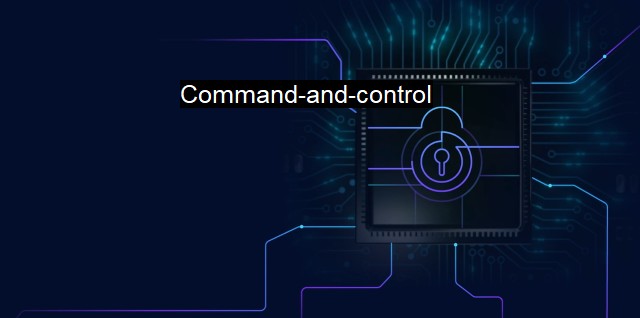What is Command-and-control?
Exploring Command-and-Control (C2) Cyber Threats: Tactics, Objectives, and Antivirus Measures
Command-and-control (C2) refers to a type of cyber threat that involves a remote attacker taking over a victim's computer system and using it to carry out malicious activities. The term is often used in the context of cybersecurity and antivirus measures, as the ability to detect and block C2 activity is a crucial part of keeping computer systems and networks secure.In a Command-and-Control attack, the attacker typically gains access to the victim's system through a method such as a Trojan horse program, a phishing scam, or a malware download. Once they are able to gain access, the attacker establishes a direct connection to the infected system, receiving data from the victim's computer as well as issuing commands and instructions.
C2 attacks can take on many different forms, depending on the objectives of the attacker. In some cases, the attacker may attempt to exfiltrate sensitive data from the victim's system, such as financial information or personal identifying data. Other times, the attacker may turn the victim's machine into a bot, using it to carry out further attacks or sending spam emails.
The more malicious of C2 attacks even result in an attacker obtaining full control of a computer or network. The attacker can then use this control to lock users out of important data or systems, or occasionally filling drives with nonsense until they no longer have free space available.
To counter such a threat, Information Security Analysts design and implement antivirus measures that are capable of detecting and blocking C2 activities. These measures range from firewalls and antivirus software to more advanced security systems that use AI and machine learning algorithms. By detecting and shutting down C2 activities quickly, antivirus mitigates harm resulting due to infections originating from such attacks.
The consequence of a successful Command-and-Control attack can abe disastrous. Systems may face not only financial loss but also confidential data exposure. If viruses aren't sniffed out quickly enough, a reputable can sustain irrepressible damage to its reputation, loss of crucial data or payout quantifiable amount of money to recover these.
Command-and-Control attacks on businesses or even governments may result in critical system risks. One example could be of every computer system instance in Beijing suddenly being turned off by hackers. Such halting might result in obstructions in financial infrastructures and basic necessities.
As such, ensuring the detection and blocking of C2 attacks on computer networks and information systems is crucial to safeguarding against these serious cyber threats. In practice, businesses, government organisations and private consumers must continuously keep all programs and anti-virus software up-to-date, and security analysts continue working to develop advanced and efficient security measures.

Command-and-control FAQs
What is a command-and-control (C&C) server in cybersecurity?
In cybersecurity, a command-and-control (C&C) server is a computer or network server that cybercriminals use to manage and control malware. The malware infects victims' computers and connects back to the C&C server to receive instructions from the attacker.How does antivirus software detect command-and-control (C&C) servers?
Antivirus software uses various techniques to detect and block command-and-control (C&C) servers. It may use behavior-based analysis or signature-based detection to identify traffic to and from known C&C servers. Antivirus software may also use reputation-based systems to determine if a particular IP address or domain is associated with malicious activity.What is the impact of command-and-control (C&C) server attacks on organizations?
Command-and-control (C&C) server attacks can cause significant damage to organizations. Once a C&C server is compromised, an attacker can use the server to launch attacks on other systems, steal sensitive data, or damage the network. Furthermore, a C&C server can act as a backdoor into an organization's network, allowing the attacker to maintain persistence and continue to carry out attacks undetected.How can organizations protect themselves from command-and-control (C&C) server attacks?
Organizations can protect themselves from command-and-control (C&C) server attacks by implementing cybersecurity best practices, such as regularly updating antivirus software, implementing firewalls and intrusion detection systems, and restricting access to sensitive data. Additionally, organizations can use threat intelligence services to monitor and block traffic to known C&C servers, and conduct regular vulnerability assessments and penetration testing to identify and address security weaknesses.Related Topics
Threat Intelligence Endpoint Detection and Response Security Information and Event Management (SIEM) Network Segmentation Vulnerability Management
External Resources
| | A | | | B | | | C | | | D | | | E | | | F | | | G | | | H | | | I | | | J | | | K | | | L | | | M | |
| | N | | | O | | | P | | | Q | | | R | | | S | | | T | | | U | | | V | | | W | | | X | | | Y | | | Z | |
| | 1 | | | 2 | | | 3 | | | 4 | | | 7 | | | 8 | | |||||||